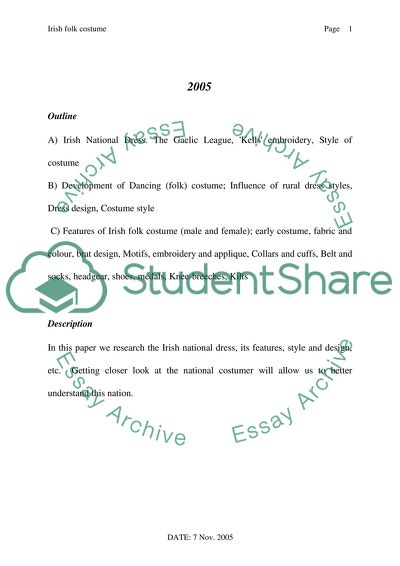Cite this document
(“Irish Folk Costume Essay Example | Topics and Well Written Essays - 3250 words”, n.d.)
Retrieved from https://studentshare.org/culture/1535249-irish-folk-costume
Retrieved from https://studentshare.org/culture/1535249-irish-folk-costume
(Irish Folk Costume Essay Example | Topics and Well Written Essays - 3250 Words)
https://studentshare.org/culture/1535249-irish-folk-costume.
https://studentshare.org/culture/1535249-irish-folk-costume.
“Irish Folk Costume Essay Example | Topics and Well Written Essays - 3250 Words”, n.d. https://studentshare.org/culture/1535249-irish-folk-costume.


